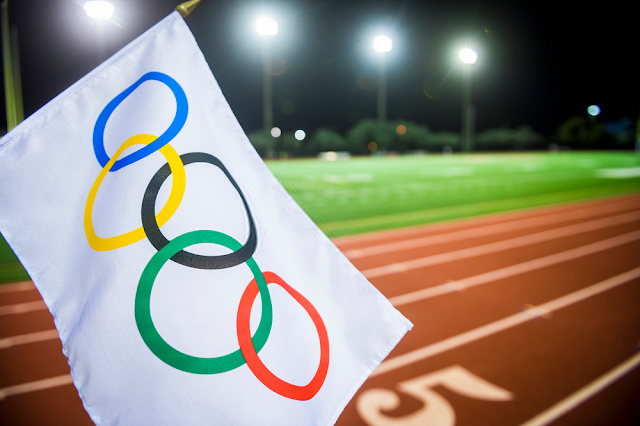To go biking
Cycling is a fun way for kids of all ages to get active and stay fit. Most children learn to ride the tricycle when they are about 3 years old. Between 4 and 7 years, most children learn to ride a bicycle. Remember, however, that every child is different and learns to cycle at his own pace.
Cycling can be an athlete's main sport, but also a way for athletes to engage in cross-training and avoid overuse injuries. Injured athletes often use the bicycle to stay in shape during rehabilitation before returning to their sport.
Although not all injuries can be prevented, the risk of injury can be reduced. Below is information from the American Academy of Pediatrics (AAP) on choosing a bicycle and avoiding injury while cycling. Also included is an overview of common cycling injuries.
How do I choose a bike?
Parents should choose a bicycle that allows the child to sit on the seat and touch both feet on the floor. When standing, the distance between the upper center bar of the bicycle and the inner groin or crotch area of the child should be only a few centimeters. With tricycles, a child can practice steering and pedaling. Bicycles with training wheels or bicycles without pedals can improve balance when learning to drive. Avoid buying a bigger bike that the child can grow into.
Injury Prevention and Safety Tips
• Equipment. The safety equipment should sit properly and be well maintained.
o helmets. Anyone riding a tricycle or bike should wear a helmet. Helmets are the most important protective equipment for bikers. Parents should lead by example by always wearing their helmets. The helmets should fit properly and the straps should be fastened. Helmets should meet the standards set by the Consumer Product Safety Commission.
o clothes. Children should wear colorful clothing while cycling so they can be easily seen by other bikers, hikers and riders. The cuffs of the pants should fit snugly so they do not get caught in the wheels or the chain.
o shoes. Firm, closed shoes should be worn to protect the toes. Shoelaces should be securely tied.
o Pads (knee, elbow and wrist pads) are useful, especially for beginners or tricksters.
o Reflectors must not be removed from children's bicycles.
• Surroundings. When a child learns to cycle, the area should be free of traffic and distractions. Parents should also choose areas without gravel, loose sand or puddles. If you learn to ride on a softer surface like grass, the risk of injury from falls is reduced. It is always best to stay on a designated bike path. Children should not ride a bicycle in the dark or at dusk, as it can be difficult for them to see or be seen.
• Regulate. Bikers should follow road rules at all times, including:
o Get off the bike when crossing roads and cross the road.
o Note stop signs.
o Drive with traffic and stay as far to the right as possible when driving on the road.
o Do not wear headphones or text while cycling or talk to a cell phone.
Frequent injuries
head injuries
Some of the most serious cycling injuries are associated with head trauma. Helmets have been shown to reduce the number and severity of injuries. If a child has a head injury, the parent should remain calm and assess the situation. If the child is not awake, call 911 immediately or your local emergency number. Parents should keep their head and neck very calm and not move the child until help arrives. The bleeding can be controlled with light pressure and a cold pack. If the child is awake but is complaining of headache, blurred vision, tinnitus, nausea or dizziness, seek medical attention immediately. These can be signs of severe head injury (concussion).
Afast Company Is So Bracing
Abdominal and inguinal injuries
Abdominal injuries can occur when a child falls and hits the end of the handlebar on the abdomen. Any child with abdominal pain, hematuria (blood in the urine) or vomiting should consult a doctor. Special tests are arranged to ensure that no major injuries have occurred.
Inguinal injuries can occur if a child falls onto the middle bar of the bicycle. Any child with bleeding, persistent pain or urinary problems should seek medical attention. Minor injuries can be treated with rest, analgesics and wraps.
Fractures (broken bones)
Before a child stops growing, fractures are more common than sprains or dislocations when a child falls. This is especially common on the wrist and ankle. If the child is not carrying any weight or if you press on the bone and hurts it, the child should consult a doctor to take an X-ray. Severe pain or obvious deformities are also a sign of a fracture. Parents can immobilize the injury with a piece of cardboard and an ACE film. Ice, not heat, should be applied and the arm or leg should be raised. The child may be given a non-prescription pain reliever.
Soft tissue injuries
Soft tissue injuries include cuts, scratches and bruises. Cuts and scratches ("rash") should be thoroughly cleaned with soap and water to remove dirt and debris. In most cases, disinfectants such as betadine or hydrogen peroxide are not required. Deep cuts or scratches with gravel, glass or splinters should be assessed by a physician. The area should be dressed with a clean bandage. Ice bags can then help relieve pain and swelling. See a doctor if there are signs of infection in the area (eg fever or if the skin around the wound is red, warm or swollen or if pus is drained).




Comments
Post a Comment